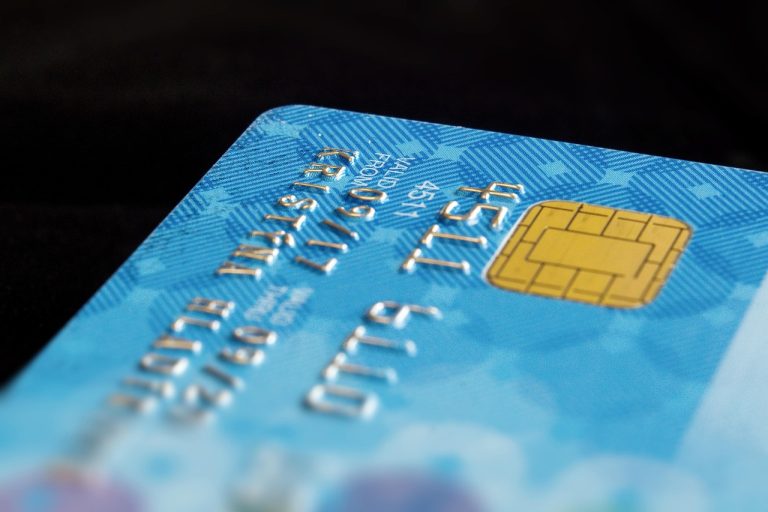Your credit score plays a central role in how lenders decide whether to offer you credit and at what interest rate.
One of the most important factors affecting your score is credit utilisation.
Yet many people don’t fully understand what it means or how to improve it.
In fact, managing your credit utilisation well can not only improve your chances of getting approved but also unlock lower interest rates and better borrowing terms.
This guide explains what credit utilisation is, how it impacts your credit score and the most effective strategies to improve it.
What is credit utilisation?
Credit utilisation is the percentage of your available revolving credit that you’re currently using.
It mainly applies to:
- Credit cards
- Store cards
- Catalogue credit
- Revolving credit lines (e.g. flexible overdrafts rather than fixed-term loans)
How it’s calculated
Say you have a total credit limit of £5,000 across three cards, and your combined balance is £1,250.
Your credit utilisation is: £1,250 ÷ £5,000 = 25% utilisation
Lenders and credit reference agencies like Experian, Equifax and TransUnion track this ratio closely because it’s a strong signal of how well you manage credit.
Why credit utilisation matters
A low utilisation rate shows lenders that you’re not overly reliant on credit and are likely to manage repayments well.
High utilisation suggests you may be financially stretched, even if you’re not missing payments.
Maintaining a low credit utilisation rate is one of the quickest ways to strengthen your credit score.
What’s a good credit utilisation rate?
There’s no official number written in stone, but here’s a practical rule of thumb used by many lenders:
- Under 30% = Healthy
- 10%–25% = Optimal (helps you build or maintain a strong score)
- Over 50% = A concern for lenders
- 90%+ = High risk
Remember: these thresholds apply both per card and overall.
Using 95% of your limit on one card can be just as damaging as using 50% across all your cards.
How credit utilisation affects your credit score
Credit utilisation accounts for up to 30% of your credit score with some agencies, second only to payment history.
Even if you pay on time, high utilisation can pull your score down.
Here’s how:
- High utilisation = financial pressure: Lenders may assume you’re borrowing out of necessity rather than choice.
- Low utilisation = financial control: Suggests you borrow responsibly and have access to credit without overuse.
Real-world example:
You have:
- Card A: £1,000 limit, £950 balance (95%)
- Card B: £3,000 limit, £0 balance
Total limit: £4,000
Total balance: £950
Overall utilisation: 23.75%
At first glance, 24% looks healthy, but the 95% on Card A is a red flag to lenders.
They’ll see you’re heavily reliant on a single line of credit, which can hurt your score even with low overall usage.
How to improve your credit utilisation: 8 effective strategies
Here are 8 simple ways to improve your credit utilisation that anyone should be able to do.
1. Pay down your balances strategically
The most direct way to reduce your utilisation is to pay down your outstanding balances, especially on any cards that are near or over 50% of their limit.
How to do it:
- Prioritise high-utilisation cards first.
- Focus on bringing each card below 30%.
- If you’re on a tight budget, even a £100 payment can shift the needle.
Use the snowball method (pay the smallest balance first for quick wins) or the avalanche method (pay the card with the highest interest first to save money long-term).
Example:
If you owe £800 on a card with a £1,000 limit, that’s 80% utilisation.
Paying off £400 drops your usage to 40%, a big improvement that lenders notice almost immediately.
2. Spread spending across multiple cards
If you have more than one credit card, you can reduce the percentage used on each by splitting purchases.
Why it helps:
Even if your total spend is the same, multiple cards with lower utilisation look better than one card near its limit.
Example:
Rather than spending £600 on one card with a £750 limit (80%), split that amount over two cards with £1,000 limits with £300 on each.
That’s 30% utilisation per card.
This only works if you can keep track of your balances and make at least the minimum payments on all cards.
3. Ask your lender for a credit limit increase
By increasing your credit limit while keeping your balance the same, you reduce your utilisation ratio.
Before you ask:
- Make sure your payment history is clean.
- Don’t request increases too frequently.
- Only do this if you won’t be tempted to spend more.
Example:
You have a balance of £600 on a card with a £1,000 limit (60%). If your provider increases your limit to £1,500, your utilisation drops to 40%, without paying a penny.
Always check whether the limit request will trigger a soft or hard credit search. Soft searches don’t affect your score, hard ones do.
4. Pay before the statement date
Most lenders report your card balance to credit reference agencies on your statement date, not your due date.
Paying before the statement is generated can lower the balance that gets reported.
Why it works:
It’s a timing trick. Your actual balance on paper doesn’t change, but the number reported to the agencies does.
Example:
Your statement date is the 14th of the month. On the 12th, you pay off £200 from your £500 balance.
Only £300 shows up as “used” when reported, reducing your visible utilisation.
Set a reminder each month to pay early, or log in weekly and pay off what you can.
5. Set up a direct debit above the minimum
A minimum payment keeps your account in good standing, but it does little to reduce your balance and therefore your utilisation.
Strategy:
- Set a fixed direct debit for a higher amount, like £75 or £100.
- This creates a consistent downward trend in your balances and improves your score over time.
If you’re uncertain what you can commit to, start small and increase when you’re able.
6. Avoid closing old credit cards (unless necessary)
Closing an unused credit card reduces your total available credit.
That shrinks the denominator in the utilisation equation, potentially pushing your usage rate up.
Example:
Before closing:
- £2,000 in total limits, £600 balance = 30%
After closing a card with £500 limit:
- £1,500 in total limits, £600 balance = 40%
That 10% jump could hurt your score.
When it’s okay to close a card:
- If the card has high annual fees
- If you’re not managing it responsibly
- If it’s a source of temptation
Otherwise, keep it open even if you only use it once every few months for a small purchase you pay off immediately.
7. Consider a balance transfer (if suitable)
If you’re paying interest on a high-utilisation card, transferring the balance to a 0% credit card can help you reduce the debt faster.
It can also improve your utilisation ratio if the new card has a higher credit limit.
Useful UK sites:
Be cautious:
- Always use eligibility checkers first to avoid a hard credit search if you’re unlikely to qualify.
- Make a note of the 0% expiry period to avoid surprise interest later.
8. Monitor your utilisation
Knowing your credit utilisation at any given time helps you make better borrowing decisions and track your progress.
Free credit monitoring tools:
- ClearScore – Equifax data
- Credit Karma UK – TransUnion data
- Experian Credit Score – Experian data
- MoneySuperMarket Credit Monitor
These platforms not only show your score but often break down your utilisation and how it’s impacting your overall profile.
Use credit to build your financial future
Improving your credit utilisation isn’t about avoiding credit altogether. It’s about using what you have wisely.
Keeping your usage low, even if you don’t pay off every card in full each month, is one of the clearest signals of financial control you can send to lenders.
If you’re aiming to apply for any type of finance, working on your utilisation now can improve access to better products down the line.
Quick recap checklist
- Keep total and individual card utilisation below 30% (ideally 10–25%)
- Pay down balances and aim to pay early
- Spread purchases to avoid high utilisation on one card
- Ask for a limit increase (only if confident)
- Avoid closing cards that help your credit profile
- Use eligibility checkers before applying for new credit
- Monitor your progress monthly with free tools

